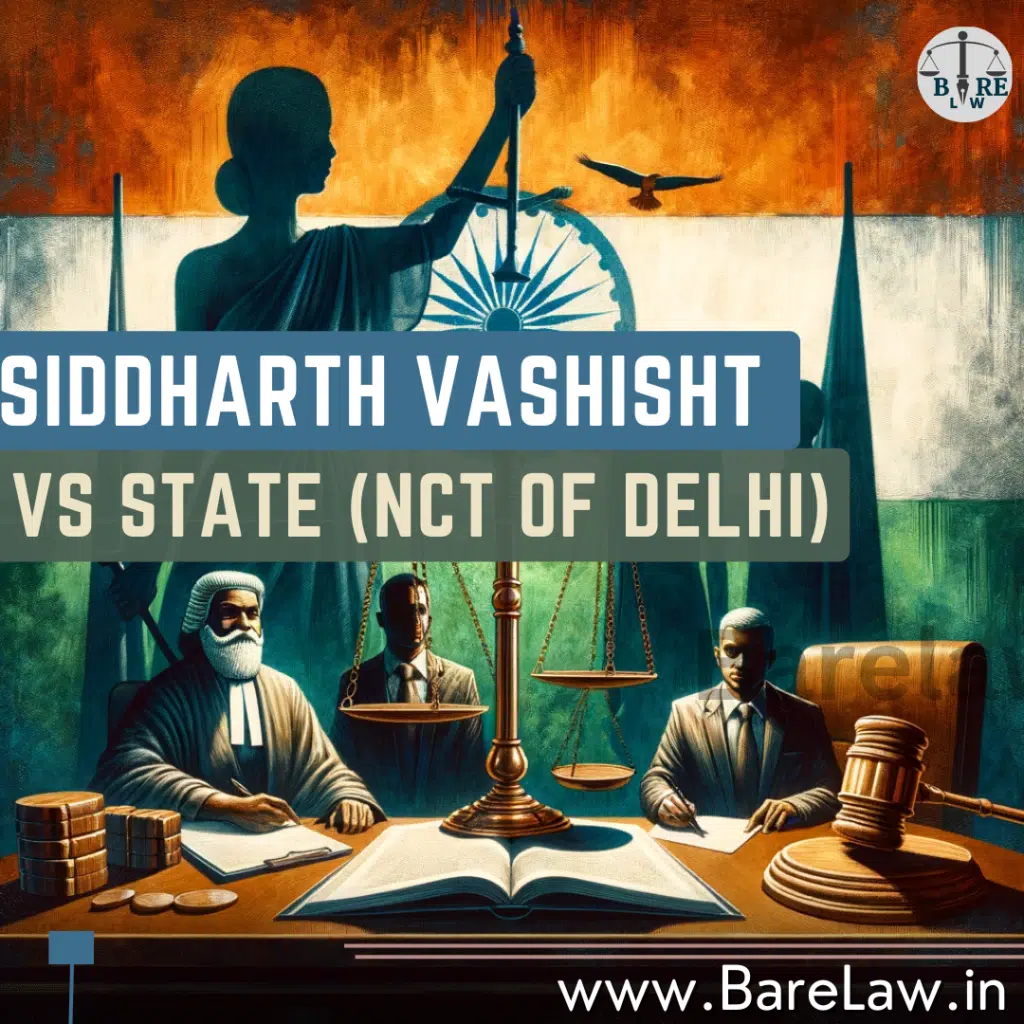
“Justice Affirmed: The Landmark Case of Siddharth Vashisht v. State (NCT of Delhi)”
Introduction:
In the annals of Indian criminal law, few cases have captivated the public and judicial minds as profoundly as the case of Siddharth Vashisht v. State (NCT of Delhi). This case, which reached the highest echelons of the Indian judiciary, is an exemplar of the intricate dance between legal principles and the pursuit of justice. It underscores the unwavering burden of proof required to convict and how even those from influential backgrounds are not beyond the reach of the law.
Background:
The case stems from the tragic events of the night of April 29-30, 1999, at Tamarind Court restaurant in Delhi. Jessica Lal, a model working as a bartender at a party, was shot dead following her refusal to serve drinks after hours to Siddharth Vashisht, the son of a prominent politician, and his companions. The trial court’s guilty verdict was upheld by the Delhi High Court, leading Vashisht to appeal to the Supreme Court of India.
The Supreme Court’s Examination:
The pivotal question before the Supreme Court was whether the prosecution had proven Vashisht’s guilt beyond reasonable doubt. The prosecution’s burden was heavy, requiring a demonstration of guilt that leaves no room for alternative explanations. The Court’s affirmation of Vashisht’s life sentence was predicated on several compelling pieces of evidence:
Eyewitness Testimonies: The testimonies of those who witnessed the act were critical in establishing Vashisht’s presence and his actions at the crime scene.
Prior Altercation: The argument between Lal and Vashisht before the shooting provided a motive, thereby strengthening the prosecution’s narrative.
Fleeing the Scene: Vashisht’s immediate departure post the incident was viewed as an act indicative of his guilt.
The verdict was not just about these pieces of evidence in isolation but rather how they formed an interlocking narrative that pointed unequivocally to Vashisht’s guilt.
Legal Implications:
The case is a cornerstone for several reasons:It reasserts the axiom that the prosecution must prove the accused’s guilt beyond a reasonable doubt.
It clarifies the exacting standards that such proof must meethigh probability of guilt against a low probability of innocence.
It reinforces the value of eyewitness accounts as a substantial basis for conviction.
It mandates a thorough consideration of all evidence, emphasizing that no evidence should be dismissed because it contradicts the prosecution’s case.
Conclusion:
The case of Siddharth Vashisht v. State (NCT of Delhi) is a testament to the Indian judiciary’s commitment to due process and fair trial. It reaffirms the core tenets of the burden of proof and the reasonable doubt standard, ensuring that justice is not just done but seen to be done. This case will continue to resonate as an example of the legal system’s impartiality and its capacity to hold all individuals accountable, regardless of their social standing.



